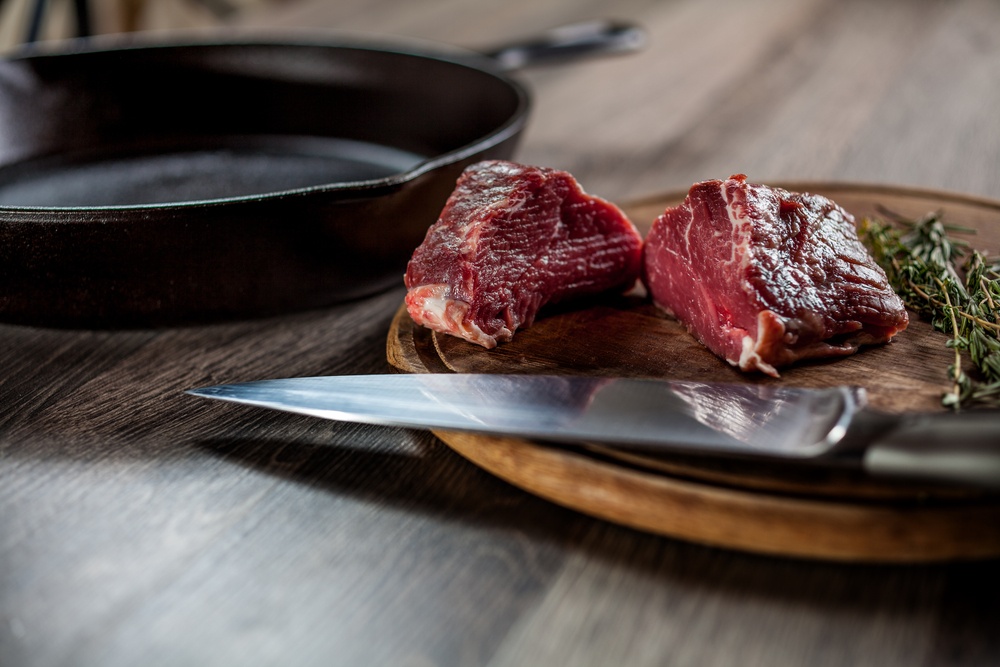Without superior quality kitchen knives it is next to impossible to prepare food perfectly. Part of cookery school is to learn which utensils and equipment should be used for each task and it’s vital that the right items are used for each specific job.
The reason for different types of knives is to ensure precision, speed, efficiency and presentation. Using the right knife per job has plenty of other crucial benefits too; it creates the right texture, is a better safety practice and gives the food you’re preparing the respect it deserves. At Alliance, we believe the knife is top of the list of importance when selecting kitchen tools so don’t take the decision lightly.
As everyone knows, in and out of the kitchen, knives are dangerous utensils to handle so understanding how to use them and when to use them is paramount. Using the wrong knife is a risk to the person using it and also to food because it can damage it unnecessarily.
Think about it this way, knives are designed to give control during use which is why there are different types and different sizes. When you purchase your kitchen knives, buy all the relevant pieces for the different tasks and if in doubt over which does which job, label each one and put a poster up in the kitchen which is useful especially for new members of the kitchen team. When you store knives away do it in a safe manner and always keep them out of reach of children!
Here’s a guide from Alliance as to the different knives and what they are used for plus a couple of our favourites to help you in your decision making:
Chef’s Knife
This knife is much larger than the other knives and is a multi-purpose knife with a blade between 8 and 14 inches in length. It is similar to a utility knife in that it is suitable for most kitchen tasks but it should not be mistaken for the same knife. This knife is good for chopping meat and fish but is also used for dicing and finely chopped food. As well as fish and meat, use this knife for slicing fruit, vegetables and herbs. Alliance recommends the Genware colour coded cook’s knife.
Boning Knife
This knife has a very slim blade and it is extremely sharp. The blade is sometimes flexible and measures up to 7 inches long. The boning knife is used for carving meat. Alliance recommends the Victorinox Fibrox boning knife.
Utility Knife
Use a utility knife as your multi-function kitchen knife. It has a mid-size blade between 6 and 8 inches in length and is a staple piece in the kitchen suitable for many jobs such as cutting fruit, vegetables, cheese slicing etc. Use the Victorinox serrated utility knife, as recommended by Alliance.
Santoku
Very popular these days, this knife is a Japanese knife with good grip. The Santoku is quite small so does take some getting used to. Some kitchens use this as a replacement for a chef’s knife and it’s excellent for those who want a smaller, lighter knife. Use it for onion chopping and for slicing and gutting fish, additionally it’s excellent for fine dicing. Alliance recommends the Giesser Professional knife.
Paring Knife
This knife is short and has a blade which measures up to 4 inches. As it is a short knife it’s best used for small jobs for example, slicing fruit, peeling garlic, trimming small vegetables such as sweet corn or mushrooms. Alliance recommends Victorinox for its broad range of paring knives.
Serrated Paring Knife
This is similar to the paring knife mentioned above but has a serrated edge and is excellent for peeling apples. The Victorinox range includes a serrated edge paring knife.
Serrated Knife
This knife has a ridged edge which gives it its serrated namesake although it is also referred to as a bread knife, used for cutting doughy textures or items with soft centres. Additionally, use it for items which have a firmer outside as it cuts through the exterior into a soft interior without ruining the texture. Alliance recommends the Giesser Professional Bread Knife.

Caring For Your Knives
Now you know which knife is which here’s some information on caring for your kitchen knives. You look after your knives for many reasons but mainly because using a blunt knife is dangerous and is actually more of a hazard than using a sharp knife. Having fine quality knives is imperative because they will last much longer than cheap products. In fact, a well-made knife should last over thirty years. Go for something with a good grip, easy to hold with a synthetic composite or hardwood handle.
Purchase a good quality knife sharpener because you will need to check your knives regularly to make sure they are up to the task at hand As well as knife sharpening machines there are also sharpening stones which are more traditional mechanisms used to keep knives at their best.
- Always use a chopping board because it will prevent wear and tear on the blade, never cut on a worktop unless it is made from a specific material designed to withstand chopping.
- Use a stainless steel blade because it won’t rust.
- Hand-wash knives separately in hot, soapy water and lay on a kitchen towel to dry.
- Never use a dishwasher because the heat from the steam will expand and contract the metal so affecting the blade’s quality.
- Use a knife block or a plastic cover to protect them when not in use.
For all your knives and sharpening tools as well as other kitchen essentials for the restaurant and hotel industry, visit Alliance, the catering experts.
